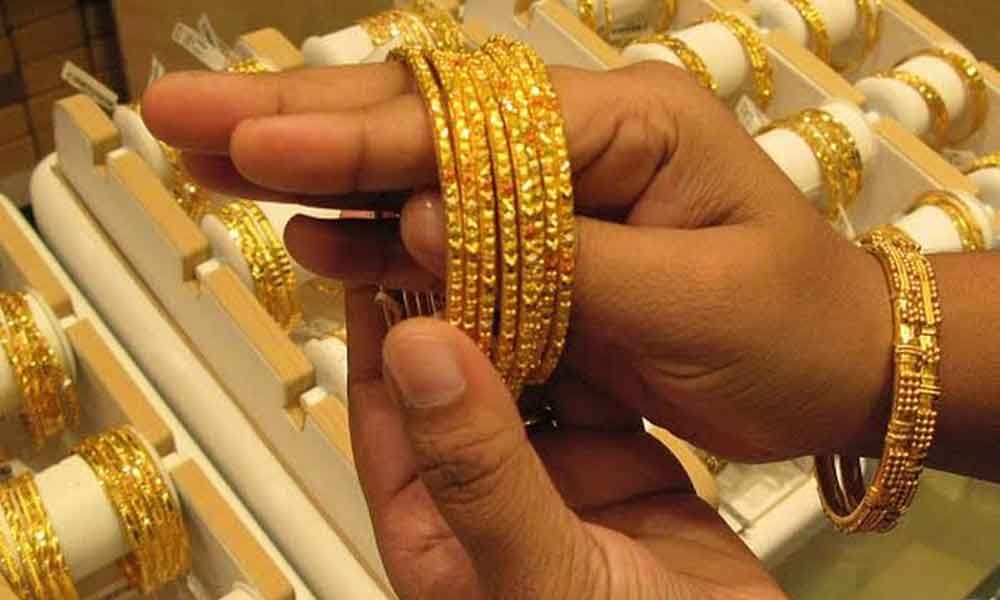Banks have traditionally dominated the organized gold loan market, holding over 75 percent of the market share. Nearly 80 percent of these are given for agricultural gold loans. In contrast, NBFCs have focused on retail gold loans against jewelry, with their share reaching about 60 percent of the Rs 2.4 trillion market by March 2024
New Delhi: The gold loan market in India remains largely untapped. According to a report by investment banking and capital market firm Jefferies organized gold financiers account for just 5-6 percent of the country’s household gold tonnages and 40 percent of the gold loan business.
The report suggests a significant portion, around 60-65 percent of gold loans still happen through unorganized channels.
Agri Gold loans and Non-Banking Financial Companies (NBFCs) each account for 14 percent of the gold loan portfolio, and banking channels give about 7 percent of gold loans.
However, over the past decade, the organized gold loan market has seen steady growth, with the total assets under management (AUM) rising by 12 percent annually to reach approximately Rs 6.2 trillion as of March 2023.
This growth has been mainly driven by formal lenders like banks and Non-Banking Financial Companies (NBFCs), which have expanded their reach and offered more competitive interest rates, ranging from 9-26 percent, compared to the 25-45 percent charged by unorganized lenders.
Banks have traditionally dominated the organized gold loan market, holding over 75 percent of the market share. Nearly 80 percent of these are given for agricultural gold loans.
In contrast, NBFCs have focused on retail gold loans against jewelry, with their share reaching about 60 percent of the Rs 2.4 trillion market by March 2024.
The Jeffries report says that while the market structure is favorable, the growth of gold loans has historically been closely tied to gold prices. Leading gold NBFCs have seen their gold loans grow at a rate of 12 percent annually over the last decade.
However, the growth in customer numbers and the amount of gold pledged has been slower, at just 1-3 percent annually. This is partly because of the limited geographic reach of gold loan branches and the high costs associated with expanding branch networks.
Jeffries suggests that despite these challenges, higher gold prices are expected to support stronger loan growth in the future. Gold prices tend to rise when real interest rates are low, making gold a more attractive investment.
Even though real interest rates have increased recently, gold prices have remained strong, driven by factors like buying by central banks, geopolitical uncertainties, and concerns about the U.S. fiscal deficit. Central banks around the world have been buying gold in record amounts, with net purchases reaching 1,082 tons in 2022 and 1,037 tons in 2023.
This trend has continued into 2024, with central banks adding 290 tons in the first quarter alone. China, for example, added 27 tons during this period. These purchases have helped keep gold prices stable, even as the expectation of interest rate cuts has been delayed.
Additionally, concerns about the U.S. fiscal situation and inflationary pressures have driven recent increases in gold prices. Although some recent U.S. economic data has been mixed, the potential for stagflation–a combination of stagnant growth and high inflation–has supported gold prices.
Looking ahead, many central banks, particularly in emerging and developing economies, plan to increase their gold reserves, which should further support gold prices.
Competition in the gold loan market has intensified in recent years, with more NBFCs entering the market and banks focusing on retail gold loans, especially after the pandemic.
Banks, which typically offer larger loans at lower interest rates, saw their retail gold loans grow by around 20 percent year-on-year in FY23, compared to 10-12 percent growth at gold-focused NBFCs.
However, competition from banks has eased somewhat in the past year, as reflected in the withdrawal of lower-yield loan schemes and improved yields at NBFCs.
The market share of NBFCs in retail gold loans has stabilized at around 60 percent.
Meanwhile, public sector banks have slowed their gold loan growth following a government directive to review and tighten gold loan processes.
The gold loan market in India is highly under-penetrated, organized lenders are slowly gaining shares but still, with about 60 percent of gold financing unorganized, there is a high scope for organized gold financing companies.

